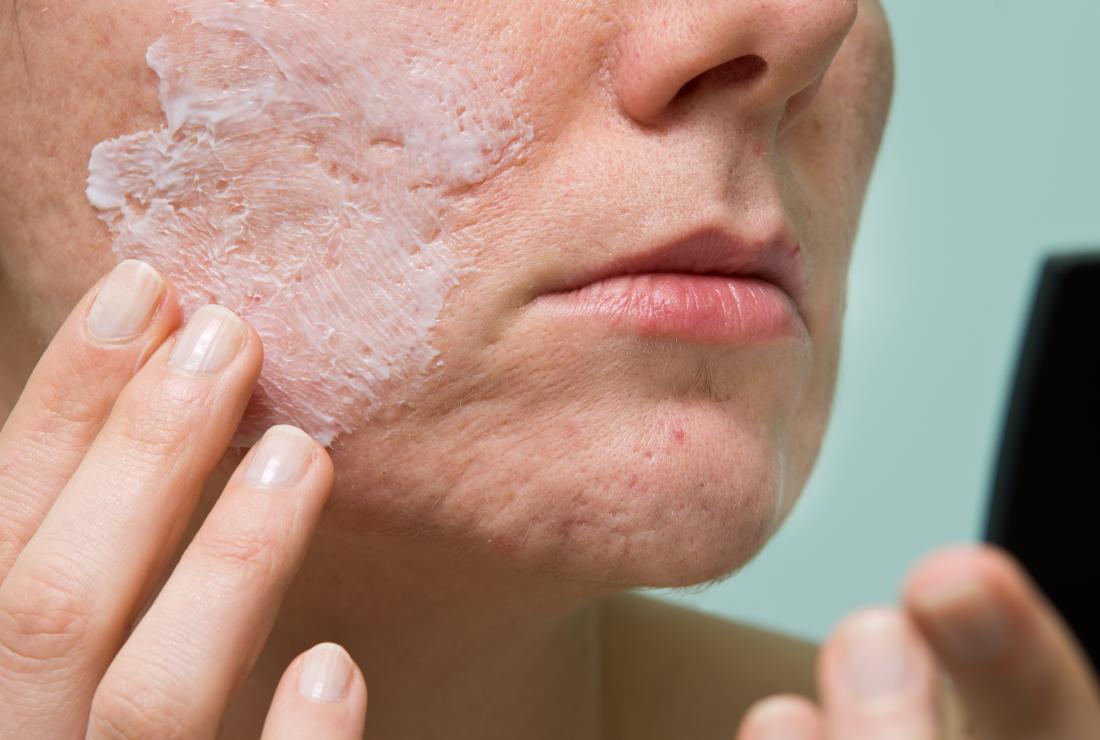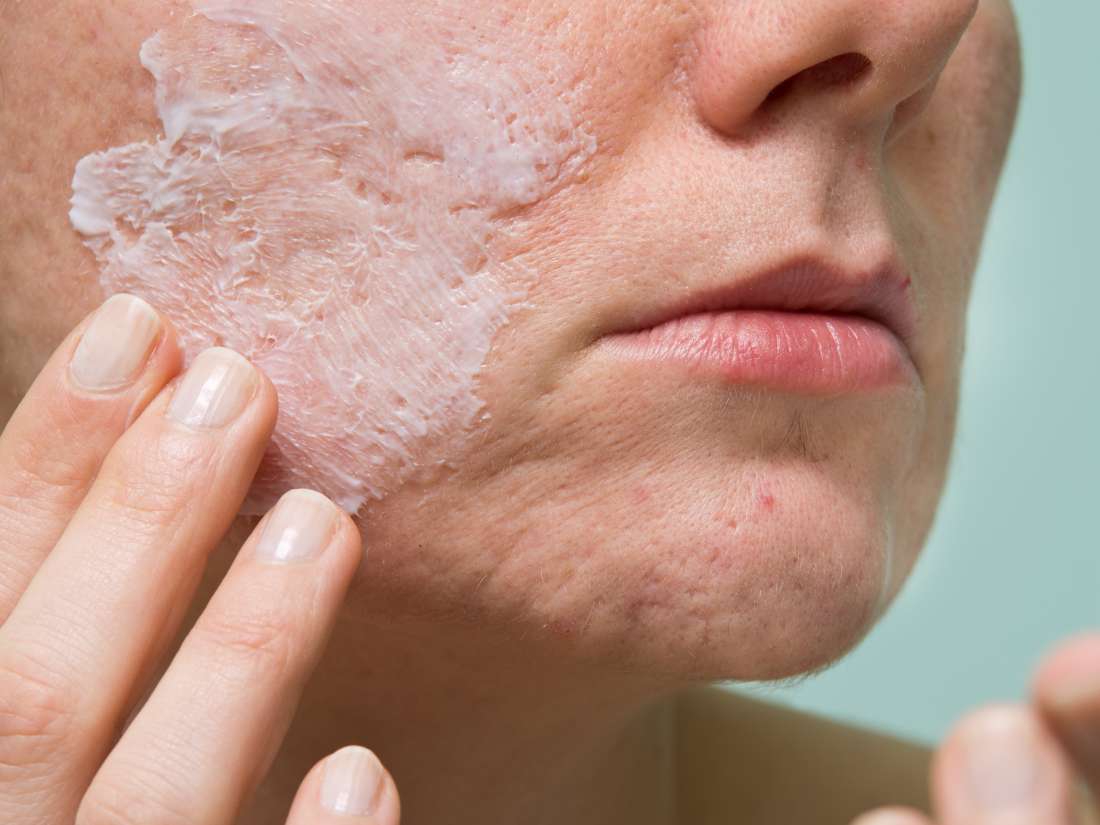Researchers estimate that acne affects about 85% of teenagers, but it can persist into adulthood. Women may be more likely to experience acne than men.
Salicylic acid and benzoyl peroxide are two common ingredients in over-the-counter (OTC) and prescription acne medications.
In this article, we compare the benefits and side effects of salicylic acid and benzoyl peroxide.
Differences

There are many acne treatment products that contain either salicylic acid or benzoyl peroxide.
Salicylic acid is an acid that is also present in the medication aspirin. Benzoyl peroxide is a chemical present in some bleaching products.
People can buy acne products that contain salicylic acid without a prescription. Salicylic acid is in many wash-off and leave-on products in concentrations between 0.5% to 2%.
People usually tolerate salicylic acid well, but unfortunately, it has limited efficacy for treating acne. While benzoyl peroxide has an ‘A’ rating for recommendations, salicylic acid only has a ‘B.’
People can also purchase acne medications that contain benzoyl peroxide over the counter. The concentration of benzoyl peroxide in these products ranges from 2.5% to 10%.
Some acne medications contain benzoyl peroxide in combination with other ingredients. These products are available only by prescription. Epiduo and Epiduo Forte are two products that contain benzoyl peroxide and a topical retinoid.
Benefits of each
Below, we look at the benefits of both types of acne treatment:
Salicylic acid
Salicylic acid helps naturally exfoliate the skin by allowing the skin cells to unstick from one another. This process can stop the formation of pimples.
One study compared using 0.5% salicylic acid twice daily to a placebo in a 12-week trial. People using the salicylic acid product had a more significant reduction in acne compared to those using a placebo.
Some studies have suggested that salicylic acid chemical peels may help improve mild acne. However, people need to use them multiple times, and the results do not last long.
Doctors recommend using products that contain salicylic acid one to three times daily.
Benzoyl peroxide
Evidence shows that benzoyl peroxide is effective in improving acne. Doctors recommend using benzoyl peroxide on its own for treating mild acne or with other topical and oral acne medications for more severe conditions.
The widespread use of topical and oral antibiotics to treat acne has led to increasing resistance of the Propionibacterium acnes bacteria that is responsible for causing acne. Doctors may recommend benzoyl peroxide because it helps prevent bacterial resistance.
People using benzoyl peroxide products may notice an improvement by the third week of treatment, but they may only see a maximal effect after 2 to 3 months.
Side effects

If a person is concerned about side effects from an OTC acne treatment, they should speak to their doctor.
Anyone with an allergy to salicylic acid should not use it on their skin. Many OTC washes and acne treatments may contain salicylic acid, so it is essential to check all the ingredients on the label.
Other side effects of salicylic acid include:
To prevent these common side effects, people can start by using it daily and gradually increasing to two or three applications per day as tolerated.
Prolonged and excessive use of salicylic acid, especially in children under 12 years old, may cause salicylate toxicity.
Salicylic acid may also interact with some mediations, including:
- acidifying agents
- some blood thinners
- antidiabetic drugs
- aspirin
- corticosteroids
- diuretics
- methotrexate
- pyrazinamide
- sulfur
- uricosuric agents
Anyone using these medications should speak to a doctor before starting OTC acne medications.
Side effects of benzoyl peroxide can include:
- peeling
- redness
- burning
- irritation
The higher the concentration of benzoyl peroxide in the product, the more likely the person will experience these side effects.
Anyone with an allergy to benzoyl peroxide should avoid any product that contains it.
How to choose
A doctor can help a person choose the most appropriate topical or oral product depending on the type of acne they have.
When doctors diagnose acne, they will classify the condition as mild, moderate, or severe. This classification will allow doctors to choose the most appropriate treatment.
Salicylic acid was not included in the guidelines because studies have shown it has limited efficacy for improving acne. Many people may still use salicylic acid for treating acne because it is widely available without a prescription.
Doctors may recommend adding salicylic acid to other treatments for moderate or severe acne.
People can use benzoyl peroxide alone for mild acne. If they do not see an improvement with benzoyl peroxide, they can try additional treatments, such as topical antibiotics or retinoids.
If a person experiences bothersome side effects from either salicylic acid or benzoyl peroxide, they can reduce how frequently they use them. Anyone with severe or intolerable side effects should stop using the products.
Other options

Other treatments for acne include topical retinoids, oral antibiotics, and spironolactone.
People can use other treatments instead of or in combination with salicylic acid and benzoyl peroxide. These include:
- topical retinoids
- topical antibiotics
- oral antibiotics
- combined oral contraceptives for females
- spironolactone
- in rare cases, isotretinoin
Summary
Salicylic acid and benzoyl peroxide are two medications that people use to treat acne. Researchers suggest that salicylic acid may not be as effective.
The American Academy of Dermatology recommend using benzoyl peroxide for mild to severe acne alone or in combination with other acne treatments.
People who use salicylic acid or benzoyl peroxide may experience dryness, inflammation, and peeling on the areas of skin where they use the product.
Doctors may, therefore, recommend using salicylic acid and benzoyl peroxide once daily or every other day, depending on the person’s tolerance.
It may take up to 2–3 months before a person notices a significant improvement in the appearance of the acne after starting benzoyl peroxide.
